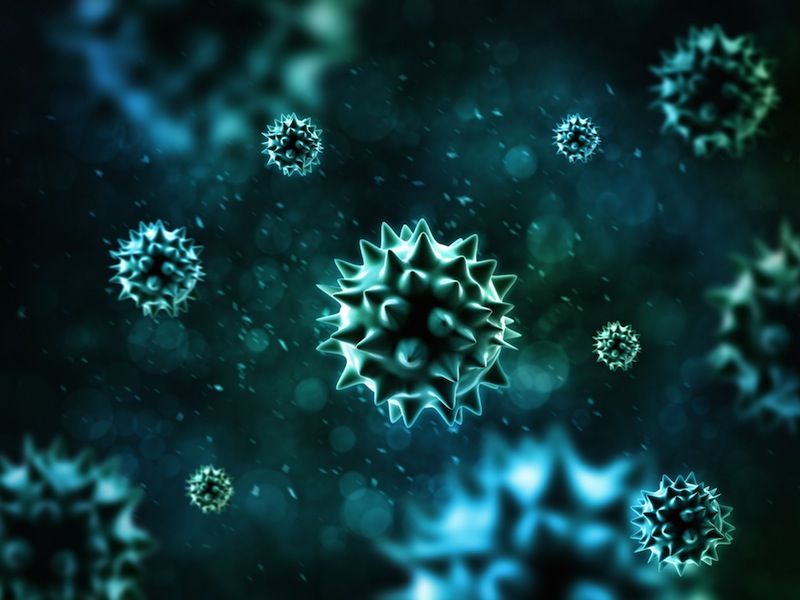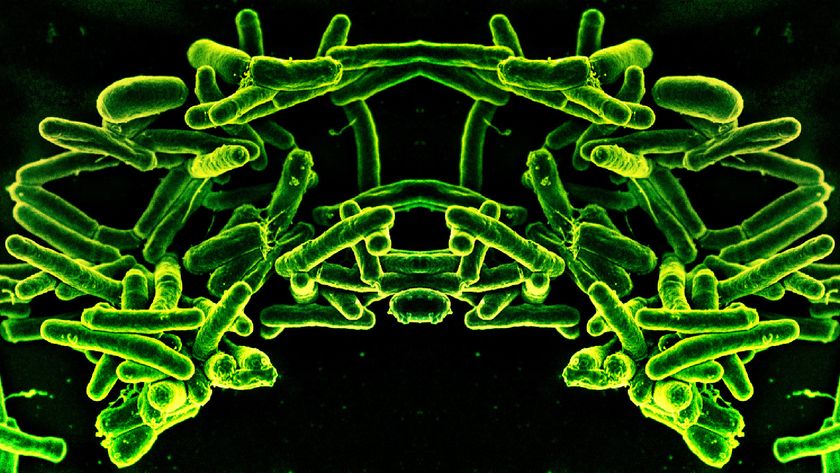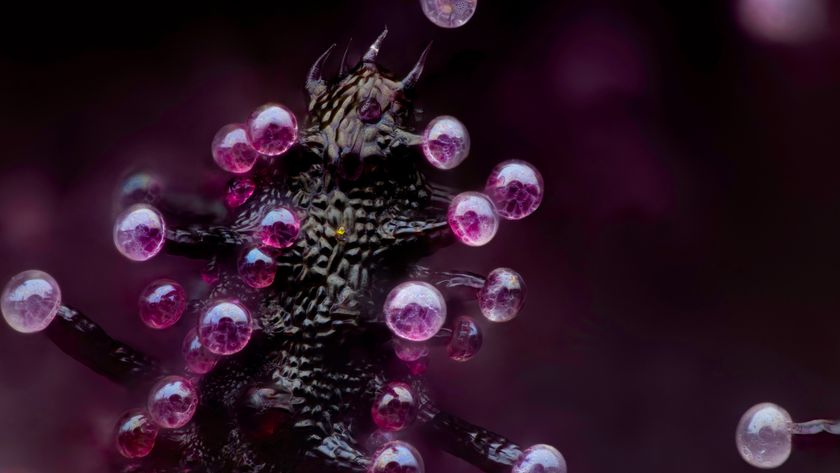
AUSTIN, Texas — From bacterial paintings to clothing that grows, the boundaries between art and science are getting ever more blurry.
More and more artists are harnessing living creatures to make political statements or illuminate the underpinnings of the modern world, researchers said here Friday (March 13) at the 2015 South by Southwest (SXSW) Interactive festival. Still others are coming up with futuristic biological solutions to present-day problems and human limitations.
The urge to turn life into other things is ancient, said Daniel Grushkin, a freelance journalist and co-founder of Genspace, a community laboratory in New York City. [Research As Art: A Gallery of Scientific Beauty]
"We've been bio-designing since the beginning, when man first took a bone and turned it into a tool or took an animal hide and used it as a coat," Grushkin said. "What's different now? Well, one is that we have the increasing ability to actually make things" that harness biological life in more sophisticated ways, he said.
Life imitates art?
As such, artists are conceiving of ambitious and outlandish ways to use life forms in their art.
For instance, one group of artists made a type of cheese cultured from bacteria on human tissue. The artwork highlights the fact that there are trillions of bacteria in our body, said Wythe Marschall, a doctoral candidate in the history of science at Harvard University in Cambridge, Massachusetts.
Sign up for the Live Science daily newsletter now
Get the world’s most fascinating discoveries delivered straight to your inbox.
Still others have designed pictures by painting with light-sensitive bacteria in the lab.
"You would draw with Magic Marker what you want the image to be, and then paint it with bacterial paint," said Karen Ingram, an artist and co-organizer of the Brooklyn Science Cabaret. One example? A portrait of Charles Darwin "drawn" in bacterial paint.
Another artist, Spela Petric, has conceptualized a mashup of humans and algae. The creatures would be generationally dyadic, meaning a human gives rise to a spore of algae, which then births a human child, and so forth.
"It ends with a haunting image of someone giving birth to algae. It's also kind of funny," Marschall said.
To design the artwork, Petric, who is trained in biology herself, consulted with synthetic biologists to come up with a somewhat feasible vision of how the process would work, Marschall said.
Human engineering
Another art series, by Arne Hendriks and collaborators, called "The Incredible Shrinking Man," comes up with a seemingly absurd solution to the problem of climate change.
"He has this great idea of just engineering every generation of humans to be slightly shorter and skinnier and they would just eat less and this would naturally solve a lot of problems," Marschall said.
To help people visualize how little people could reduce humans' toll on the planet, the artist portrayed a tiny portion of fries, which would be enough to feed a person who was just 20 inches (50 centimeters) tall.
But the work also extends to speculation about how things such as environment and hormones could be manipulated to change a person's height.
Body architect Lucy McRae developed a pill, alongside a synthetic biologist, that excretes a perfume when people sweat. Her artwork, Germination, also imagined a world where " you had clothes that grew throughout the day," Marschall said. And she has also developed a concept of Chlorophyll skin, which would have the ability to change color like a chameleon's skin.
Follow Tia Ghose on Twitter and Google+. Follow LiveScience @livescience, Facebook & Google+. Originally published on Live Science.

Tia is the managing editor and was previously a senior writer for Live Science. Her work has appeared in Scientific American, Wired.com and other outlets. She holds a master's degree in bioengineering from the University of Washington, a graduate certificate in science writing from UC Santa Cruz and a bachelor's degree in mechanical engineering from the University of Texas at Austin. Tia was part of a team at the Milwaukee Journal Sentinel that published the Empty Cradles series on preterm births, which won multiple awards, including the 2012 Casey Medal for Meritorious Journalism.











